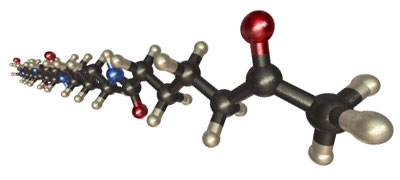 Back on July 7, 2011, I wrote a post titled “Does Your Innovation Team “Focus and Finish.” I was talking to one of my colleagues this week, Dan Lamone (one of our guest post authors and current MBA student, The Ohio State University, Fisher School of Business,class of 2018) about a meeting he was in and the topic of focusing on the right project came up. He used one of my “Jeff-isms” which is “focus and finish” which translates to focus on the task at hand and work unilaterally until the project/task is finished. The premise of my original post was that too often we get overwhelmed by too many things going on that we try to do too much and as a result not much gets done.
Back on July 7, 2011, I wrote a post titled “Does Your Innovation Team “Focus and Finish.” I was talking to one of my colleagues this week, Dan Lamone (one of our guest post authors and current MBA student, The Ohio State University, Fisher School of Business,class of 2018) about a meeting he was in and the topic of focusing on the right project came up. He used one of my “Jeff-isms” which is “focus and finish” which translates to focus on the task at hand and work unilaterally until the project/task is finished. The premise of my original post was that too often we get overwhelmed by too many things going on that we try to do too much and as a result not much gets done.
We looked at four issues when evaluating a portfolio of new products:
- Risk tolerance
- Under resourcing
- Funding
- Portfolio balance
I am not going to go over these again, click on the link above to go to the original post. My discussion here is to look at the downsides of “focus and finish.” In other words, what happens if you focus on the wrong project or idea, or market? From a new product development perspective, one of the most important things successful innovators get right, is that they have a knack to pick the right projects. The first part of the analysis consists of asking the question: What should I not work on right now? Apple is famous for deciding what they are not going to work on and then relentlessly pursuing getting it right on the products/services they focus on. Once you answer the question about the obvious things you should not work on, then it gets a bit more tricky.
One of the services I provide in my consulting business is to conduct technology/market assessments for companies that either have a new product or are thinking about developing a new product. The two components of a new product are:
- Unmet market need
- Technical solution specifically targeted at meeting the unmet need
Sounds pretty simple, but getting the right answer is sometimes elusive. Most of the polymer companies I work with typically have the second bullet already done. They then go looking for a problem to solve with the technical solution in hand. That’s actually backwards. Outstanding innovators find the unmet need and then figure out how to meet the need. A good example is the story of Sarah Blakely, the founder of Spanx (she was just interviewed in the most recent edition of Fortune along with Mark Cuban). It all started when she didn’t like the way her behind looked under form fitting clothing. She worked in her apartment and cut panty hose and leggings until she had a prototype of her shapewear. Then she was rejected by countless manufacturing companies until her persistence paid off. The rest they say is history. From a bumpy behind to a billionaire! The reason for her extraordinary success what she found a very large unmet need for many women and then worked tirelessly until she got it right. In other words, she identified the problem and only then went to work on the solution.
On the other hand, how many times have companies developed interesting and even cool technology and then went looking for a market or a problem to solve? A great example of focusing on the wrong thing. I don’t know the answer, but someone must have calculated how much R&D money was wasted on technologies with no applications. Focus and finish won’t help you here!
A tool I use with my clients is the “Real, Win, Worth It” evaluation (see George Day, Harvard Business Review, December 2007 for details). The assessment asks three questions:
- Is it Real?
- Can We Win?
- Is it Worth It?
These sound like simple questions, but if you take the time to dig into the details, you will typically find some interesting things you never thought about. Click on the link above for more details. I also have a series of posts with much more details of the Real, Win, Worth It assessment.
After you work hard on getting the right project identified, then it is time to “Focus and Finish.”

Leave a Reply